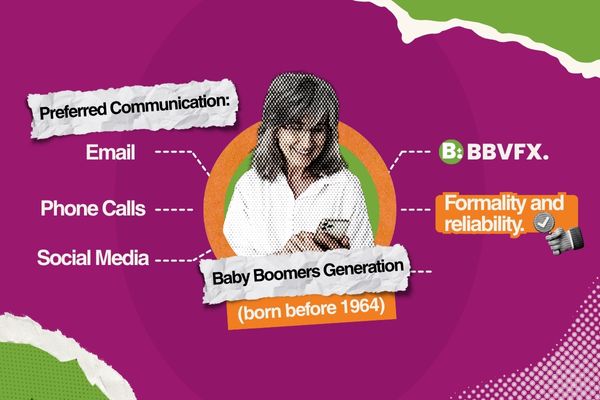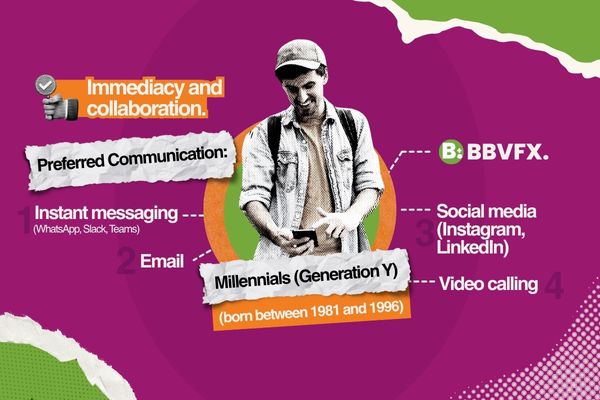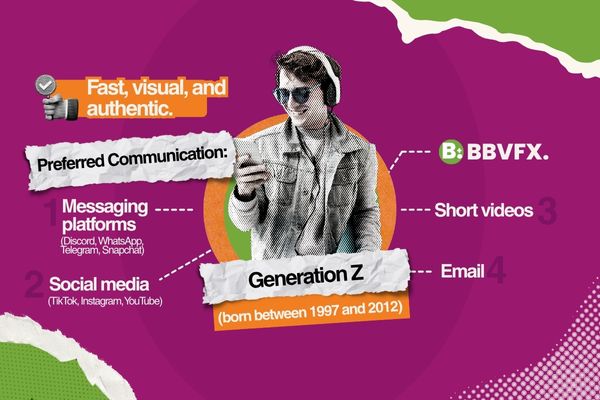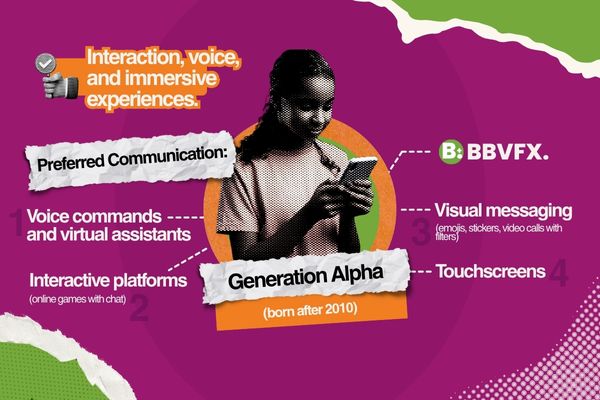Why can a single team have such different ideas about using technology in the workplace? Some prefer a detailed email report, while others expect a quick Slack message. The secret of digital generations lies in applying strategies to connect with an audience.
This clash of styles, this diversity in how we interact with the digital world, is more common than one might think. The reality is that the digital age encompasses everything, but our relationship with it is profoundly shaped by the generation to which we belong.
Therefore, understanding these differences is the foundation for companies’ decision-making in the customer acquisition process, or even in internal communication.
Pioneers and adapters: The Baby Boomers
In the generation known as Baby Boomers, digital technology was adopted for its practical utility. They weren’t born with a smartphone in hand; instead, they learned to use technology to simplify tasks.

For communication, their preference often leans towards email as a formal and reliable medium. Their use of social media may be limited and more focused on staying in touch with family or following specific information. According to a Pew Research Center study, 77% of Baby Boomers use Facebook, primarily to connect with family and friends.
As traditional sources of information, they focus on newspapers and television, media that still hold significant weight for this generation. Because of this, there can be a certain skepticism towards purely online information, making them more meticulous in verification.
Regarding business and banking, their adaptation to e-commerce and online banking has been cautious. This leads them to prioritize security and familiarity with traditional methods. Trust is built gradually through positive experience.
The digital bridge: Generation X
This generation acted as a bridge between the analog and digital world. They experienced the arrival of the internet and early digital technologies, adapting to them without being digital natives.

In terms of communication, email remains relevant, but they have also experienced the early adoption of text messages and the first social media platforms. They move with relative comfort between both communicative worlds.
An eMarketer report indicates that Generation X spends an average of 6 hours and 58 minutes a day consuming digital media, demonstrating their adaptability.
Additionally, they possess a developed discerning ability from having lived in a pre-digital era. However, they are not immune to online misinformation.
Furthermore, they have embraced the convenience of online shopping and banking for the efficiency they offer, although they may maintain certain reservations and compare options before making decisions.
Digital natives: Millennials and Generation Z

For these generations, technology has been a constant since birth. Their immersion in the digital world is total and natural.
Therefore, these generations base their communication on instant messaging (WhatsApp, Telegram, etc.) and social media, prioritizing immediacy and real-time interaction.
This is demonstrated by a Statista study revealing that 98% of Millennials and Generation Z use messaging apps at least once a day.

Consequently, their primary source of information is digital platforms. They are highly dependent on social media, influencers, and content creators. This underscores the need for strong media literacy to discern accurate information.
When it comes to their shopping and banking behavior, it basically centers on e-commerce and digital payments. They show a high willingness to try new platforms and online payment methods.
According to Shopify, Millennials and Generation Z account for the majority of online purchases, driving the growth of e-commerce.
The digital future: Generation Alpha
But it doesn’t all end with Millennials or Generation Z. Evolution continues, and a new generation is approaching. This is the generation growing up in a world where artificial intelligence, virtual assistants, and new interfaces are increasingly common.

How are they identified? Although their digital habits are still forming, they show a high intuitive familiarity with emerging technologies such as touchscreens, voice commands, and interactive applications.
This generation, comprised of those born since 2010, demonstrates an even more symbiotic relationship with technology; they learn through play and constant interaction.
Mark McCrindle, an Australian social researcher, coined the term “Generation Alpha” and has extensively researched how this generation will interact with technology and society.
He states that it is the first generation born entirely in the 21st century and, therefore, represents the beginning of something new.
Why is understanding digital generations vital for businesses?
Understanding the main differences between generations allows companies to:
- Optimize internal communication: Ensure that important information reaches your entire team, regardless of age.
- Design effective marketing strategies: Connect with different customer segments through the right channels and messages.
- Manage talent: Attract, retain, and motivate employees from different generations, always leveraging their digital strengths.
- Develop relevant products and services: Create solutions that align with the expectations and consumption habits of each generation.
Recognizing and valuing these different perspectives among digital generations is the first step toward building more effective communication bridges and designing solutions that engage and sustain multigenerational audiences.

